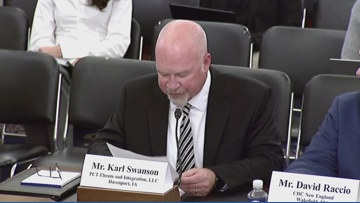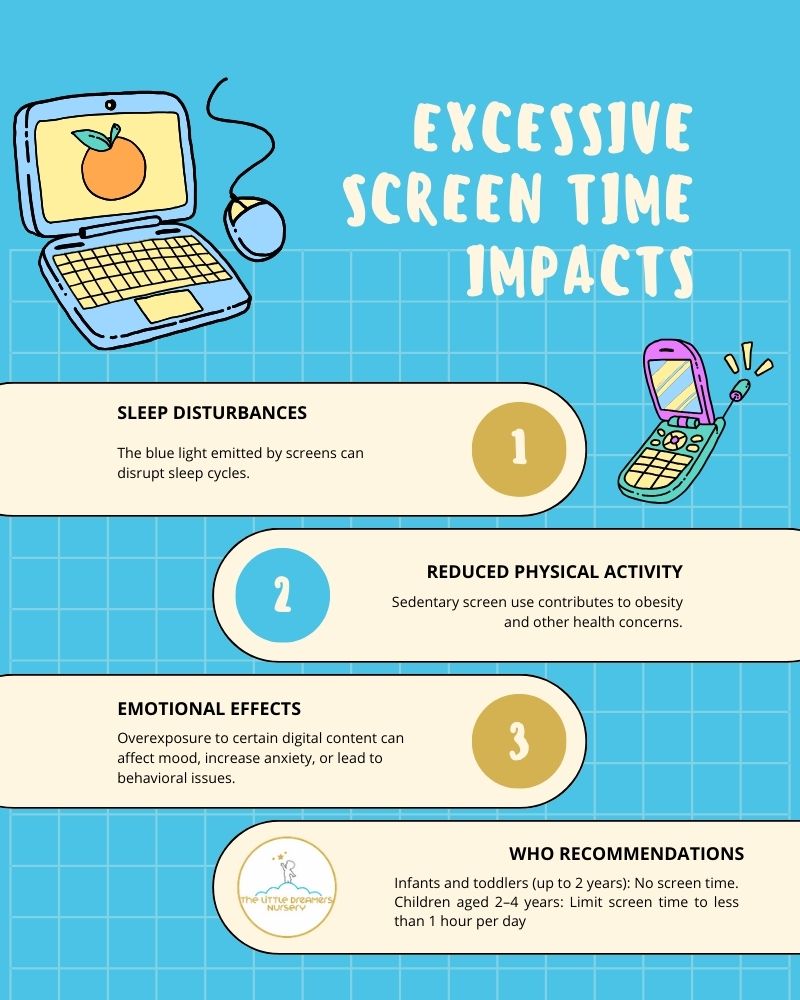Executive Summary: Taunton Public Schools’ Literacy Initiative and Alignment with Sustainable Development Goals
The Taunton Public School district has initiated a new early literacy tutoring program for all its elementary schools, targeting first-grade students. This initiative, developed in collaboration with the Massachusetts Department of Elementary and Secondary Education (DESE) and Ignite Reading, directly supports the achievement of several United Nations Sustainable Development Goals (SDGs), primarily SDG 4 (Quality Education), SDG 10 (Reduced Inequalities), and SDG 17 (Partnerships for the Goals). The program is designed to provide equitable, high-quality foundational literacy skills, particularly for students requiring additional support, thereby fostering inclusive learning environments and building a strong foundation for lifelong learning.
Program Overview: A Strategic Partnership for Educational Equity
Contribution to SDG 17: Partnerships for the Goals
This program exemplifies a multi-stakeholder partnership as outlined in SDG 17. It leverages the combined strengths of public and private sector entities to achieve educational objectives.
- Public Sector: Taunton Public Schools and the Massachusetts Department of Elementary and Secondary Education.
- Private Sector: Ignite Reading, a specialized tutoring organization.
Program Objectives and Alignment with SDG 4: Quality Education
The core mission is to ensure all students become confident and fluent readers, which is fundamental to achieving SDG 4. Key objectives include:
- Accelerating reading growth for students performing below grade-level benchmarks.
- Providing free, accessible tutoring to eliminate economic barriers for families.
- Building a strong foundation for future academic success and lifelong learning opportunities.
Implementation and Methodology: Ensuring Inclusive and Quality Learning
Targeting Vulnerable Learners to Reduce Inequalities (SDG 10)
To advance SDG 10 by reducing educational disparities, the program employs a systematic identification process. Students are selected based on data from the Dynamic Indicators of Basic Early Literacy Skills (DIBELS) assessment, which identifies those performing below and well below established benchmarks. This data-driven approach ensures that resources are directed toward students who need them most, promoting educational equity.
Pedagogical Approach: Science-Based Instruction for Foundational Skills
The instructional methodology is rooted in evidence-based research, aligning with the call for quality education in SDG 4.
- Delivery Model: Tutoring is delivered virtually in daily 15-minute sessions during the school day.
- Tutor Expertise: Tutors receive over 100 hours of training in the “Science of Reading,” a research-based body of knowledge on effective literacy instruction.
- Personalized Support: The curriculum is designed to provide personalized instruction and support tailored to meet each child’s individual learning needs.
Impact Analysis and Data-Driven Outcomes
Evidence of Efficacy: Advancing SDG 4 Target 4.1
A study conducted by Johns Hopkins University on 1,872 first-grade participants provides quantitative evidence of the program’s effectiveness in improving learning outcomes. The results demonstrate significant progress toward achieving quality primary education.
- The percentage of students at or above the DIBELS benchmark increased from 16% to 50%.
- The percentage of students requiring intensive intervention decreased from 64% to 29%.
Demonstrated Success in Reducing Educational Disparities (SDG 10)
The program has proven effective across various student demographic groups, confirming its role in promoting inclusive education. Similar positive results were achieved for English Learners, Black Students, Hispanic Students, and students with Individualized Education Programs (IEPs), directly addressing the goal of reducing inequalities in educational outcomes.
Continuous Improvement Framework
Data from tutoring sessions is systematically shared with school-level staff. This practice enables educators to make informed instructional decisions, creating a cycle of continuous improvement. As students achieve reading fluency, they graduate from the program, allowing resources to be reallocated efficiently while classroom teachers focus on core instruction.
Leadership Perspective and Future Outlook
Commitment to Foundational Learning and Lifelong Success
Superintendent John Cabral emphasized the program’s alignment with the district’s commitment to quality education, stating, “This new tutoring program is a powerful resource that directly supports our youngest learners using research-backed methods… We are confident it will help our students build a strong foundation for future academic success.” This vision directly supports the long-term goals of SDG 4.
Endorsement of Data-Driven, Individualized Support
Assistant Superintendent for Curriculum and Instruction, Chris Baratta, highlighted the program’s contribution to equitable education. He noted that the individualized support based on the Science of Reading and the data-driven approach using DIBELS will provide staff with “valuable insights to better support every child,” reinforcing the district’s commitment to leaving no student behind, a central principle of the SDGs.
Analysis of SDGs, Targets, and Indicators
1. Which SDGs are addressed or connected to the issues highlighted in the article?
-
SDG 4: Quality Education
This is the primary goal addressed. The article focuses entirely on an educational initiative—an early literacy tutoring program—designed to “help students become confident and fluent readers and accelerate reading growth.” The program’s objective is to improve the quality of foundational education for first-grade students, which is central to SDG 4.
-
SDG 10: Reduced Inequalities
The program specifically targets students “who need it most,” including those “performing below and well below grade level benchmarks.” The article highlights that the program achieved positive results across diverse student groups, including “English Learners, Black Students, Hispanic Students, and students with Individualized Education Programs.” This focus on providing equitable support to vulnerable and marginalized student groups directly addresses the goal of reducing inequalities in educational outcomes.
-
SDG 17: Partnerships for the Goals
The article explicitly states that the program is a “partnership with the Massachusetts Department of Elementary and Secondary Education and Ignite Reading.” This collaboration between a public school district, a state-level public entity, and an external organization (Ignite Reading) exemplifies the multi-stakeholder partnerships that SDG 17 promotes to achieve sustainable development objectives.
2. What specific targets under those SDGs can be identified based on the article’s content?
-
Target 4.1: Ensure that all girls and boys complete free, equitable and quality primary and secondary education leading to relevant and effective learning outcomes.
The program targets first-grade students to build foundational literacy skills. This is a direct intervention to ensure children achieve effective learning outcomes at the very beginning of their primary education, which is critical for their future academic success and completion of school.
-
Target 4.5: Eliminate gender disparities in education and ensure equal access to all levels of education and vocational training for the vulnerable.
The article’s mention of the program’s success with “English Learners, Black Students, Hispanic Students, and students with Individualized Education Programs” directly relates to this target. The program is designed to provide equal access to quality instruction for vulnerable student populations, helping to close achievement gaps.
-
Target 10.2: Empower and promote the social, economic and political inclusion of all, irrespective of age, sex, disability, race, ethnicity, origin, religion or economic or other status.
By providing targeted literacy support to children from diverse backgrounds, the program aims to reduce inequalities of outcome. Foundational literacy is a key tool for future social and economic inclusion, and by ensuring all children acquire this skill, the program works towards the goal of this target.
-
Target 17.17: Encourage and promote effective public, public-private and civil society partnerships.
The program is a clear example of this target in action. It is a formal partnership between Taunton Public Schools (public), the Massachusetts Department of Elementary and Secondary Education (public), and Ignite Reading (a private/civil society organization) to achieve a common educational goal.
3. Are there any indicators mentioned or implied in the article that can be used to measure progress towards the identified targets?
-
Literacy Proficiency Assessment Scores
The article explicitly names the “DIBELS, or Dynamic Indicators of Basic Early Literacy Skills, assessment” as the tool used to identify students and measure progress. The data from the Johns Hopkins study provides concrete metrics:
- The percentage of students at or above the DIBELS Benchmark (rose from 16% to 50%).
- The percentage of students who required intensive intervention (dropped from 64% to 29%).
These metrics serve as direct indicators for measuring progress towards the learning outcomes described in Target 4.1.
-
Disaggregated Data on Student Performance
The article implies the use of this indicator by stating that the program “achieved similar results across various student groups, including English Learners, Black Students, Hispanic Students, and students with Individualized Education Programs.” Tracking DIBELS scores disaggregated by these demographic groups is a key indicator for measuring progress towards reducing inequalities, as outlined in Target 4.5 and Target 10.2.
-
Formation of a Multi-Stakeholder Partnership
The existence of the partnership itself is an indicator for Target 17.17. The article identifies the specific partners involved: the Taunton Public School district, the Massachusetts Department of Elementary and Secondary Education, and Ignite Reading. The successful implementation of the program through this collaboration serves as a qualitative indicator of an effective partnership.
4. Create a table with three columns titled ‘SDGs, Targets and Indicators” to present the findings from analyzing the article.
| SDGs | Targets | Indicators |
|---|---|---|
| SDG 4: Quality Education | Target 4.1: Ensure quality primary education with effective learning outcomes. | Percentage of students at or above the DIBELS (Dynamic Indicators of Basic Early Literacy Skills) Benchmark. |
| SDG 10: Reduced Inequalities | Target 4.5 & 10.2: Ensure equal access for the vulnerable and promote inclusion. | Disaggregated DIBELS assessment data showing similar results across student groups (English Learners, Black Students, Hispanic Students, students with IEPs). |
| SDG 17: Partnerships for the Goals | Target 17.17: Encourage and promote effective public, public-private and civil society partnerships. | The existence and operation of the partnership between Taunton Public Schools, the Massachusetts Department of Elementary and Secondary Education, and Ignite Reading. |
Source: tauntongazette.com







